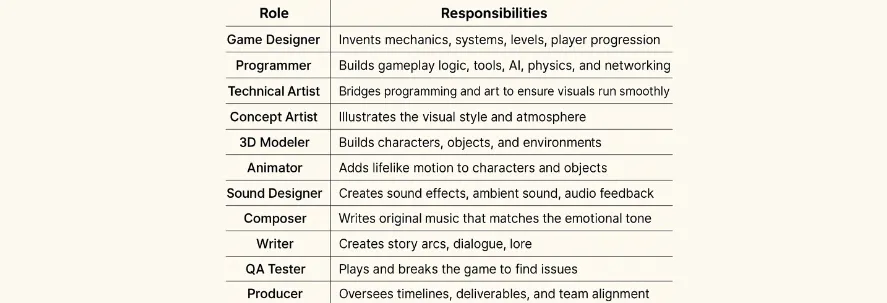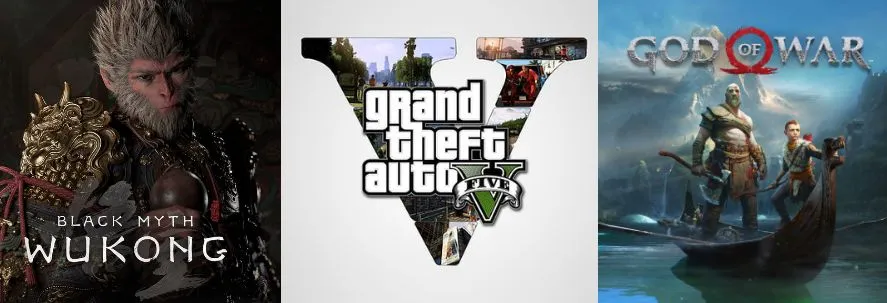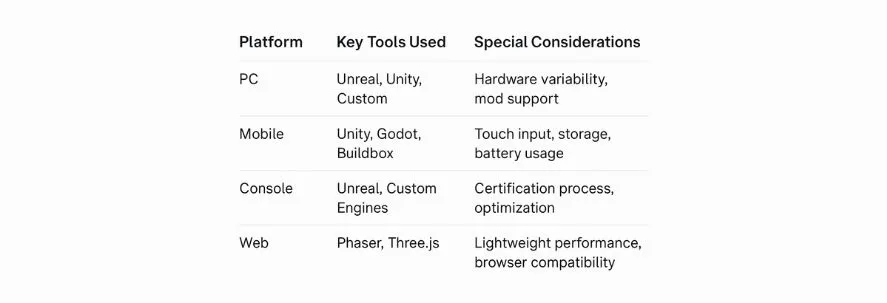Ever played a game and thought, “How on earth do they build something like this?” You’re not alone. With every passing year, games are getting more visually stunning, emotionally moving, and technically complex. But behind the scenes of every cinematic cutscene and intense boss battle lies an intricate and structured process. This guide is your inside look into how games are made—from napkin sketch to global release.
Introduction: The Magic Behind the Screen
Video games uniquely combine storytelling, visual artistry, music, programming, and an understanding of player psychology. They entertain, challenge, teach, and sometimes even heal. Yet most players have no idea what it really takes to make one.
Whether you're a gamer, aspiring developer, or just curious about the game development process, this in-depth guide will walk you through every major stage and explore how video games are created, including how some of the most ambitious titles—like GTA V, God of War, and Black Myth: Wukong—came to life.
What Is Game Development?
Game development covers the design, coding, creation, testing, and release of a video game. It brings together disciplines from creative arts and software engineering into a single, collaborative effort.
Core Disciplines Involved:
- Game Design: The rules, systems, and player interactions
- Programming: The code that drives logic and systems
- Art & Animation: Characters, environments, textures, effects
- Sound Design & Music: The audio atmosphere and emotional tone
- Writing & Narrative: Dialogue, world-building, storytelling
- Production & Management: Budget, timeline, task coordination
- Quality Assurance: Testing for bugs, glitches, and balancing
The Game Development Team: Who Makes What Happen?

For large-scale games, development teams can be massive, sometimes involving hundreds or even thousands of contributors. Gaining insight into the various roles is essential to understanding how these games are created.
In games like GTA V, Rockstar Games employed multiple studios around the world to complete the project over several years.
The Game Development Process: Step-by-Step Breakdown
Understanding how games are made means diving into the full lifecycle—a process that includes several complex and overlapping stages.
1. Ideation and Concept Development
Every game begins with a concept. It could be a detailed story idea, a unique mechanic, or even just a mood or vibe. In a game like God of War (2018), the transition from Greek to Norse mythology started as a narrative concept that ultimately redefined the entire series.
- Brainstorming sessions
- Market and audience research
- Defining the game's unique value proposition
2. Pre-Production
The concept is refined and fleshed out:
- Game Design Document (GDD) is created
- Early concept art and prototypes are made
- The right engine is chosen (Unreal Engine, Unity, etc.)
- Team roles and budget are defined
3. Choosing the Game Engine
Depending on the type and scope, studios select an engine:
- Unreal Engine 5: Used by Black Myth: Wukong for its stunning visuals and real-time global illumination
- RAGE (Rockstar Advanced Game Engine): Proprietary engine for GTA V
- Santa Monica Studio's proprietary engine: Drives the power behind God of War.
4. Production
This is the most time-consuming and costly phase in the game development process.
- Building gameplay mechanics
- Developing core systems like AI, physics, and combat
- Modeling characters, environments, and props
- Animating character actions, facial expressions, and cutscenes
- Composing the soundtrack and implementing sound effects
Black Myth: Wukong stands out here with its use of motion capture, ray tracing, and high-fidelity asset creation.
5. Testing and Quality Assurance
Games undergo multiple test phases:
- Alpha Testing: Internal testing of rough builds
- Beta Testing: External feedback for polishing
- Stress testing (especially for multiplayer games)
- Performance testing on multiple platforms
6. Marketing and Hype Generation
- Teasers and trailers
- Developer diaries
- Influencer previews
- E3 presentations and social media campaigns
GTA V was heavily hyped with cinematic trailers, early previews, and exclusive content to build global anticipation.
7. Launch
- Released digitally and/or physically
- Day-one patches are often included
- PR campaigns and reviews go live
8. Post-Launch Support
- Bug fixes and balance updates
- Downloadable Content (DLC)
- Multiplayer events and seasonal content
God of War Ragnarök received post-launch patches and enhanced accessibility features, whereas GTA Online developed into a dynamic, ever-evolving world with regular content updates.
A Closer Look: How AAA Games Like GTA V, God of War & Black Myth: Wukong Are Made

Image credit : IGN
GTA V
- Developed by Rockstar North over 5+ years
- Budget exceeded $265 million
- Utilizes a custom engine (RAGE) along with the Euphoria physics engine to deliver realistic character motion.
- Huge open-world design based on Los Angeles
- Seamless switching between three protagonists
God of War (2018)
- Built by Santa Monica Studio with 300+ team members
- Fully reimagined gameplay and combat
- Narrative-driven, single-camera approach (no cuts or loading screens)
- Motion-capture for every major character
Black Myth: Wukong
- Developed by Chinese indie studio Game Science
- Developed with Unreal Engine 5, featuring latest technologies like Nanite and Lumen.
- Connected with Chinese mythology and deeply inspired by the classic story Journey to the West.
- Combines cinematic visuals, fast-paced combat, and rich lore
These examples highlight how games are created on a grand scale, blending ambition, innovation, and cutting-edge technology.
How Games Are Made for Different Platforms

Can You Make Games Without Coding?
Absolutely! No-code and low-code platforms allow anyone to prototype and build games and understand the basic stages of making a game:
- GDevelop: Drag-and-drop logic
- Construct 3: Visual scripting
- Buildbox: 2D/3D game creation
- RPG Maker: Best for story-rich games
- Roblox Studio: Lua scripting with robust tools

These platforms help creative minds focus on gameplay and design without the barrier of complex code.
Frequently Asked Questions
1. What are the stages of the game development process from beginning to end?
Ans. The game development process typically follows a structured path that includes concept creation, design, development, testing, and release. This journey can be broken down into stages such as pre-production (brainstorming and planning), production (coding, designing, and building assets), and post-production (testing, bug fixing, and launching). Understanding the full game development process helps explain how video games are created from a simple idea to a playable product.
2. How are video games developed by teams?
Ans. Video games are created through the combined efforts of programmers, artists, designers, and sound engineers.
The process starts with a central concept and progresses through stages such as concept art, mechanics design, coding, level creation, and thorough testing. Each department plays a vital role in shaping the game's world, mechanics, and overall user experience. This teamwork is crucial in understanding how games are made in both indie studios and large-scale AAA productions.
3. What are the essential stages of making a game?
Ans. The stages of making a game include:
- Pre-production – establishing the game concept, genre, and target audience.
- Production – designing levels, developing mechanics, creating assets, and programming.
- Testing – identifying and fixing bugs, improving performance, and balancing gameplay.
- Launch – publishing the game and distributing it to platforms.
- Post-launch support – including updates, patches, and managing player feedback. These stages represent the fundamental framework of the game development process, illustrating how video games are created step by step.
4. What is the typical timeframe for developing a video game?
Ans. The time it takes to develop a video game can vary widely depending on its scope, complexity, and the size of the development team. Smaller indie games may take just a few months, while large AAA titles can take 3–5 years or even longer. The overall duration is also influenced by how effectively the team manages the development process and moves through the various stages of production.
5. What tools and skills are essential to understanding how games are made?
Ans. To fully grasp how games are made, developers often rely on tools like Unity, Unreal Engine, Blender, and Photoshop. Important skills include programming (typically in C# or C++), game design, 3D modeling, sound design, and storytelling. Mastering these tools and skills is crucial for anyone interested in understanding the process of creating video games from concept to release.
6. What language is best for game development?
Ans.
- C# (Unity)
- C++ (Unreal Engine)
- Python (for learning & prototyping)
- Lua (Roblox)
7. Is game development expensive?
Ans.
- Indie games can be built on a budget
- AAA games like GTA V require multi-million dollar investments
Recommended reads: Firebase Studio vs Cursor vs Windsurf: DEV Tool Comparison
Conclusion: The Art and Science of Making Games
Learning how games are made reveals how each department collaborates to bring stories and virtual worlds to life. It isn’t just about writing code or drawing characters—it’s about telling stories, creating worlds, and giving players a reason to care. Whether it’s the gritty streets of Los Santos, the mythic forests of Midgard, or the enchanted landscapes of ancient China, the magic of games lies in the people who build them.
Whether you’re dreaming of making your own game, or simply gaining a deeper appreciation for the ones you play, understanding how video games are created is the first level in your own journey.






